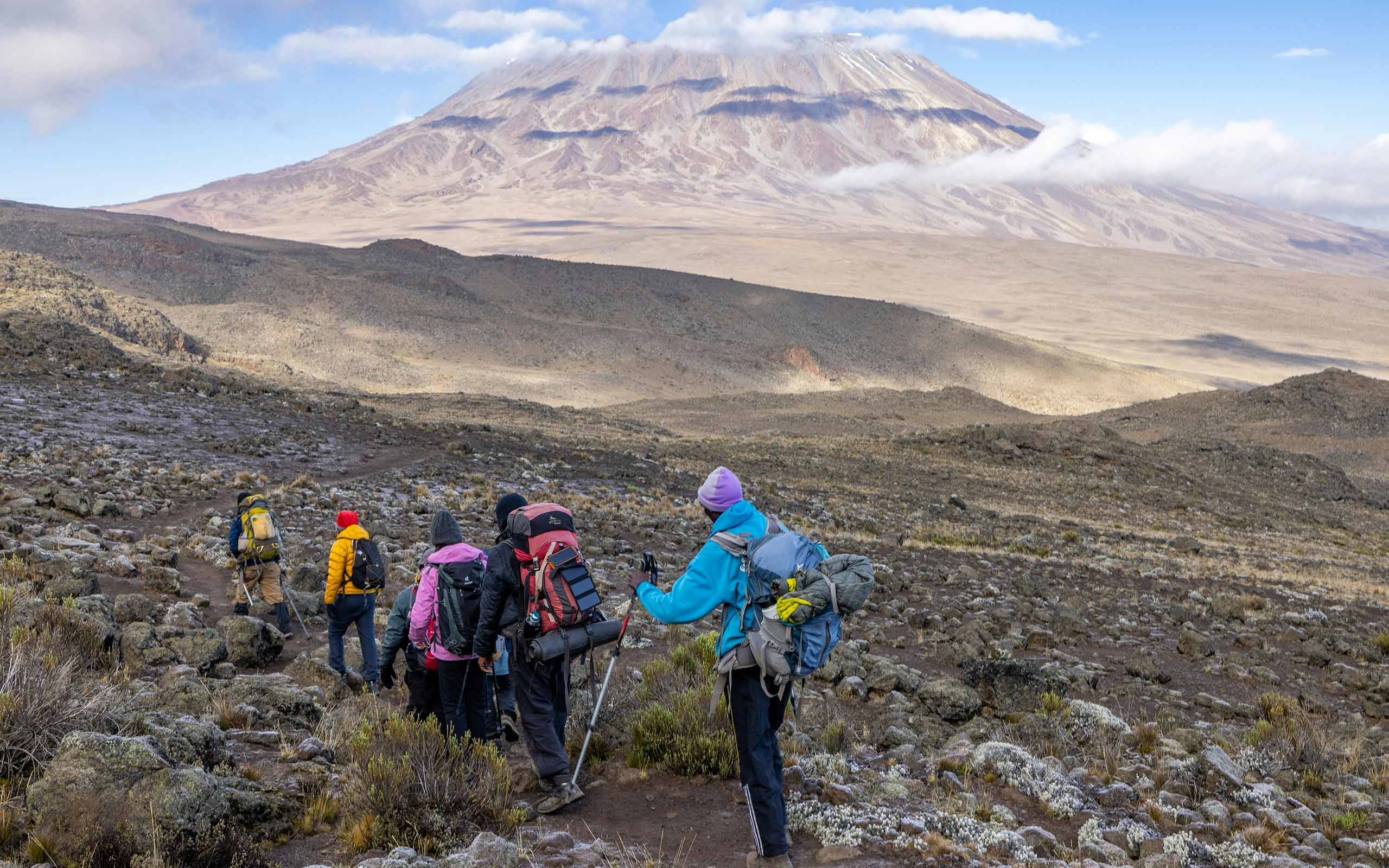Imagine waking up to the crisp, cool air of the African highlands, the sun casting golden hues across a landscape dominated by towering mountains. Africa’s mountains are more than just geological formations; they are natural wonders that offer some of the most breathtaking and diverse trekking experiences on the planet. From the snow-capped peak of Mount Kilimanjaro to the rugged cliffs of the Drakensberg, each mountain tells a story of natural beauty, adventure, and cultural heritage. For those seeking an unforgettable journey, these iconic peaks and trails offer a gateway to Africa’s most awe-inspiring landscapes.
Mount Kilimanjaro: The Roof of Africa
Rising above the plains of Tanzania, Mount Kilimanjaro is the highest free-standing mountain in the world and the crown jewel of African trekking. At 5,895 meters (19,341 feet), Kilimanjaro offers a trek like no other, where climbers pass through five distinct ecological zones—from lush rainforests to barren alpine deserts—before reaching the snow-capped summit of Uhuru Peak. The thrill of reaching the “Roof of Africa” is matched only by the breathtaking views of the surrounding savannah, stretching as far as the eye can see. Each route up Kilimanjaro offers a unique experience. The Machame Route, often dubbed the “Whiskey Route,” is the most popular, offering a challenging but rewarding trek with diverse landscapes.
For those seeking a quieter ascent, the Lemosho Route provides stunning vistas and a more gradual climb, ideal for acclimatization. The Rongai Route, approaching from the north, offers a less-traveled path, allowing trekkers to enjoy the mountain’s serenity. Regardless of the route, the journey to the top of Kilimanjaro is as much about mental resilience as it is about physical endurance, and the reward is an experience that stays with you long after you’ve descended.
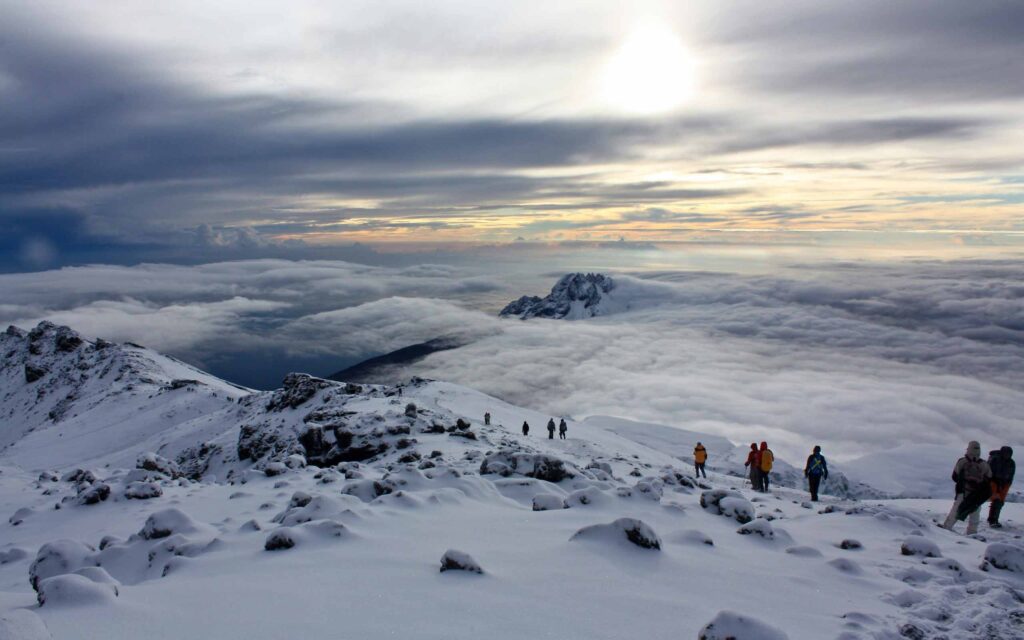
Mount Kenya: A Climber’s Dream
While Kilimanjaro is often in the spotlight, Mount Kenya offers a more rugged and technical challenge for those looking to push their climbing skills. Standing at 5,199 meters (17,057 feet), Mount Kenya is Africa’s second-highest peak and a UNESCO World Heritage site. The mountain’s jagged peaks, glaciers, and tarns create a dramatic landscape that draws climbers from around the world.
For the experienced mountaineer, the ascent of Batian and Nelion, the mountain’s twin summits, is a thrilling adventure. However, trekkers can also aim for Point Lenana, the third-highest peak, which provides a non-technical but equally rewarding climb. The Chogoria Route, known for its stunning scenery, takes climbers past Lake Michaelson and the Gorges Valley, offering panoramic views that are nothing short of spectacular. As you ascend, the mountain’s diverse ecosystems—from bamboo forests to alpine meadows—reveal the rich biodiversity that makes Mount Kenya a unique natural treasure.
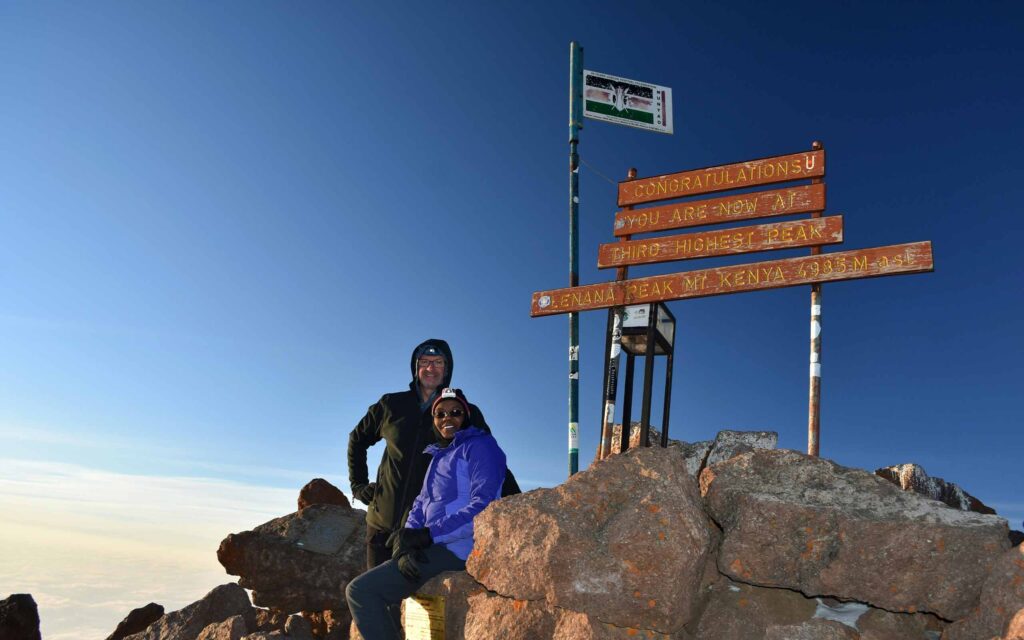
The Drakensberg: South Africa’s Mountain Playground
In South Africa, the Drakensberg range, also known as uKhahlamba (the Barrier of Spears), is a hiker’s paradise, offering over 1,000 kilometers (620 miles) of rugged peaks, rolling grasslands, and deep valleys. Recognized as a UNESCO World Heritage site, the Drakensberg is home to some of the most dramatic landscapes in Africa, including the Amphitheatre, a sheer cliff face that rises over 1,200 meters (3,900 feet) above the Tugela River.
The Drakensberg’s diverse trails cater to all levels of hikers. The Sentinel Peak hike offers a relatively short yet exhilarating climb with panoramic views of the Amphitheatre and the Tugela Falls, the world’s second-highest waterfall. For the more adventurous, the Drakensberg Grand Traverse is a multi-day trek that takes you across the entire length of the range, offering a deep immersion into this breathtaking wilderness.
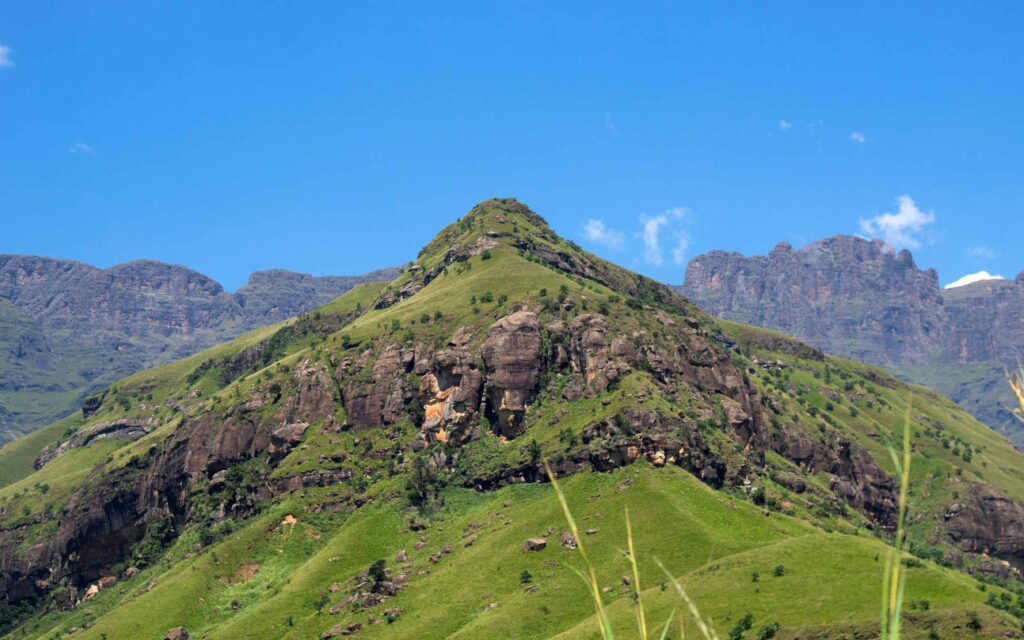
Beyond the physical beauty of the Drakensberg lies a rich cultural history. The San people, who once roamed these mountains, left behind thousands of rock paintings that can still be seen in caves and shelters throughout the range. These ancient artworks provide a fascinating glimpse into the lives of Africa’s earliest inhabitants, adding a layer of historical depth to your trekking adventure.
The Atlas Mountains: Morocco’s Majestic Range
Spanning across Morocco, Algeria, and Tunisia, the Atlas Mountains are a striking natural barrier between the Mediterranean coast and the vast Sahara Desert. Morocco’s portion of the Atlas is the most famous, with its rugged peaks, deep gorges, and traditional Berber villages.
Mount Toubkal, the highest peak in North Africa, stands at 4,167 meters (13,671 feet) and is a popular destination for trekkers. The ascent begins from the charming village of Imlil, and the journey to the summit typically takes two days. As you climb, you’ll pass through terraced fields, walnut groves, and high-altitude meadows, with the final stretch offering stunning views of the surrounding mountains and, on clear days, the distant Sahara.
The Atlas Mountains are not just about the challenge of the climb; they offer an opportunity to immerse yourself in the Berber culture. Staying in a traditional guesthouse, enjoying a meal with a local family, or exploring a bustling souk adds a rich cultural dimension to your adventure. The Berber people’s deep connection to the land is evident in their hospitality, making a trek in the Atlas Mountains a journey not just through nature, but through history and tradition as well.
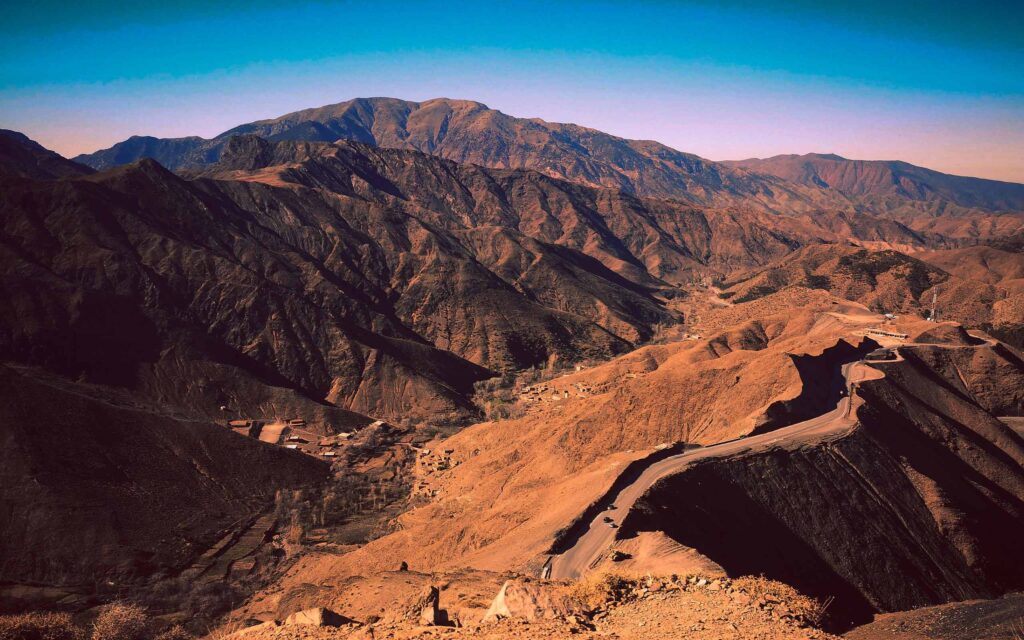
The Simien Mountains: Ethiopia’s Sky-High Wilderness
In northern Ethiopia, the Simien Mountains rise dramatically from the landscape, their jagged peaks and deep valleys creating one of Africa’s most breathtaking mountain ranges. A UNESCO World Heritage site, the Simien Mountains are home to Ras Dashen, the highest peak in Ethiopia and the fourth-highest in Africa, standing at 4,550 meters (14,928 feet).
Trekking in the Simien Mountains is a journey through a landscape that is as diverse as it is spectacular. The cliffs and escarpments of the Simiens are home to unique wildlife, including the Gelada baboon, the Walia ibex, and the Ethiopian wolf. The most popular trekking route takes you from the town of Debark, through high-altitude meadows, dramatic escarpments, and remote villages, with the option to ascend Ras Dashen for those seeking to reach the highest point in Ethiopia.
The Simiens offer more than just natural beauty; they provide a deep sense of connection to Ethiopia’s ancient history and culture. The Amhara people, who inhabit the region, welcome trekkers into their villages, offering a glimpse into a way of life that has remained largely unchanged for centuries. This cultural exchange adds a rich and rewarding dimension to any trek in the Simien Mountains.
The Rwenzori Mountains: Africa’s Mystical Peaks
Known as the “Mountains of the Moon,” the Rwenzori Mountains straddle the border between Uganda and the Democratic Republic of Congo. This UNESCO World Heritage site is famous for its stunning beauty, with snow-capped peaks, glaciers, and lush valleys often shrouded in mist. The highest peak, Mount Stanley, reaches 5,109 meters (16,763 feet), making it the third-highest mountain in Africa.
Trekking in the Rwenzori Mountains is an adventure like no other. The trek to Margherita Peak, the summit of Mount Stanley, is challenging and requires technical climbing skills, but the reward is an unparalleled experience of Africa’s wild and mystical side. Along the way, trekkers pass through a series of distinct ecosystems, from tropical rainforest to moorland and finally to the alpine zone, where glaciers and snowfields await.
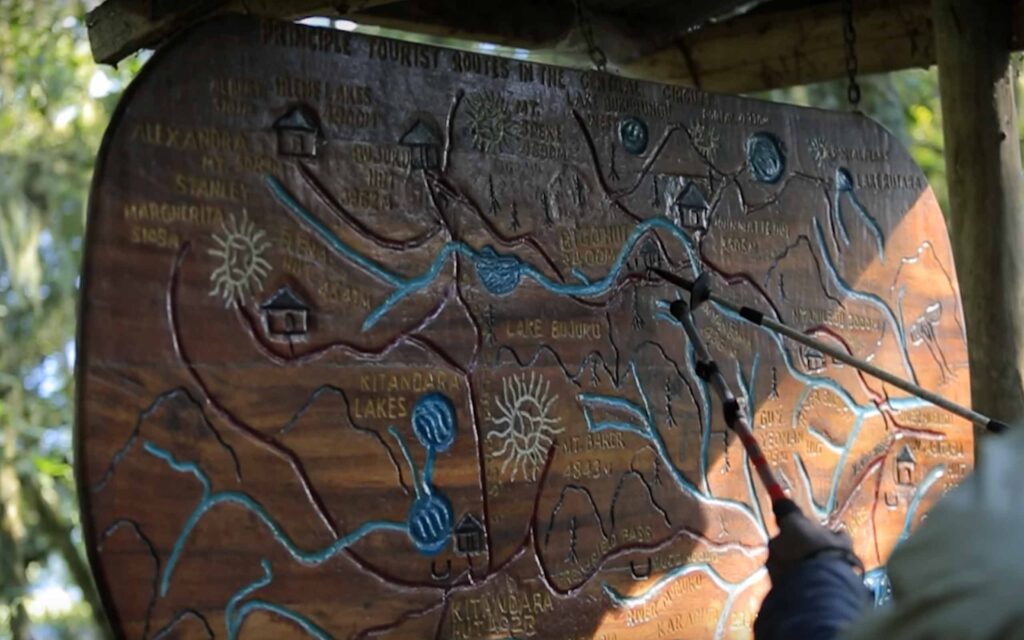
The Rwenzori Mountains are also home to a rich array of flora and fauna, including endemic species found nowhere else on Earth. The unique plant life, such as giant lobelias and heathers, adds to the otherworldly atmosphere of the trek. For those who seek a truly off-the-beaten-path adventure, the Rwenzori Mountains offer a journey into one of Africa’s most remote and mystical landscapes.
Protecting Africa’s Peaks
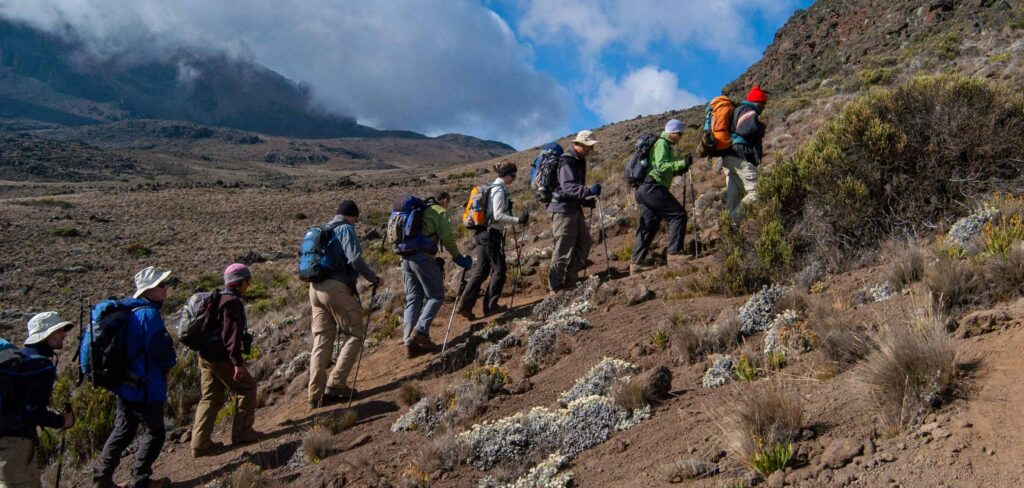
Africa’s majestic mountains are not just destinations for adventure; they are fragile ecosystems that need protection. Responsible tourism is crucial to preserving these natural wonders and ensuring they remain pristine for future generations.
Many of Africa’s iconic peaks are located within protected areas, such as national parks and UNESCO World Heritage sites. Conservation efforts, such as those in the Rwenzori Mountains National Park and the Simien Mountains National Park, focus on protecting the unique biodiversity of these regions while promoting sustainable tourism practices.
Ongoing Conservation Projects
- Rwenzori Mountains National Park Conservation Project (Uganda): Managed by the Uganda Wildlife Authority, this project focuses on preserving the unique biodiversity of the Rwenzori Mountains. Efforts include anti-poaching initiatives, habitat restoration, and engaging local communities in sustainable practices.
- Simien Mountains Conservation Program (Ethiopia): Supported by the Ethiopian government and international organizations, this program aims to protect the Simien Mountains’ fragile ecosystems. The project includes efforts to mitigate soil erosion, protect endangered species like the Walia ibex, and promote sustainable tourism.
- Mount Kenya Trust (Kenya): This organization works to protect Mount Kenya’s ecosystems through reforestation projects, anti-poaching patrols, and community outreach. The Trust focuses on conserving the forested areas of Mount Kenya, which are crucial for the region’s water supply.
- Kilimanjaro National Park Conservation (Tanzania): The Tanzania National Parks Authority (TANAPA) oversees conservation efforts on Kilimanjaro. Projects include reforestation initiatives to combat deforestation, waste management programs to reduce the impact of tourism, and education programs for local communities on the importance of conservation.
Reaching New Heights in Africa
Africa’s iconic peaks and trails offer some of the most exhilarating and rewarding experiences for adventurers and nature lovers. Whether you’re standing on the summit of Kilimanjaro, exploring the rugged beauty of the Drakensberg, or trekking through the mystical Rwenzori Mountains, each journey offers a unique perspective on the continent’s diverse landscapes and rich cultural heritage.
Plan your adventure with Visit Africa and let us guide you to the top of Africa’s most majestic mountains. Whether you’re a seasoned climber or a first-time trekker, our personalized itineraries and expert guides will ensure that your journey is safe, enjoyable, and unforgettable. Discover the thrill of Africa’s peaks and the beauty of its trails, and create memories that will last a lifetime.

